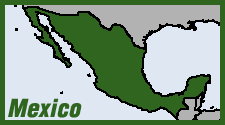 Miguel Ángel Jiménez Blanco, a leading activist in Mexico's violence-torn state of Guerrero and a vocal advocate for the families of the the 43 students who went missing there in September 2014, was himself found dead on Aug. 10. His body was discovered riddled with bullets and slumped over the wheel of the taxi he owned in the pueblo of Xaltianguis, just outside Acapulco. He had led search parties after the disappearance of the students, who are now believed to have been turned over to a murderous narco-gang after being detained by police. Only one body of this missing students has yet been found. As it became increasingly clear the students had been killed, he helped organize a group called The Other Disappeared—mostly women, who meet every Sunday to search the hills for the remains of their loved ones. Since the group began work, it has unearthed 129 bodies, which were handed over to the authorities for identification. As he began to organize around the issue, Jiménez Blanco said some 300 families came forward saying they also had missing relatives. He said in a BBC interview earlier this year: "We have been saying from the start that this area is a cemetery."
Miguel Ángel Jiménez Blanco, a leading activist in Mexico's violence-torn state of Guerrero and a vocal advocate for the families of the the 43 students who went missing there in September 2014, was himself found dead on Aug. 10. His body was discovered riddled with bullets and slumped over the wheel of the taxi he owned in the pueblo of Xaltianguis, just outside Acapulco. He had led search parties after the disappearance of the students, who are now believed to have been turned over to a murderous narco-gang after being detained by police. Only one body of this missing students has yet been found. As it became increasingly clear the students had been killed, he helped organize a group called The Other Disappeared—mostly women, who meet every Sunday to search the hills for the remains of their loved ones. Since the group began work, it has unearthed 129 bodies, which were handed over to the authorities for identification. As he began to organize around the issue, Jiménez Blanco said some 300 families came forward saying they also had missing relatives. He said in a BBC interview earlier this year: "We have been saying from the start that this area is a cemetery."
Jiménez Blanco was also a commander of the "community police" force—the village self-defense militia network that emerged in response to co-optation of the "official" police by the narco gangs. He was a founder of the Union of Peoples and Organizations of Guerrero State (UPOEG), which coordinated the "community police" movement throughout the state. He had, of course, received numerous death threats. (La Reforma, BBC News, Politoscope, Aug. 10)
The slaying comes on the heels of another that has also been sparking headlines and outrage across Mexico. Rubén Espinosa, a prominent photo-journalist, was found dead Aug. 1—shot in the head in his apartment in a middle-class neighbrohood of Mexico City along with four friends, all young women. He worked for the national weekly Proceso and aggressively covered activism in his home state of Veracruz—including the 2012 protest campaign demanding the resignation of Gov. Javier Duarte after a Proceso journalist was killed there. He had recently fled to Mexico City after receiving death threats in Veracruz.
Mexico City Mayor Miguel Ángel Mancera has pledged an exhaustive investigation into the murders, while the UN Office for the High Commissioner of Human Rights (OHCHR) called the massacre a "grave act against freedom of expression." (Jurist, Aug. 4; Proceso, Aug. 2; The Guardian, Aug. 1)
Violence against journalists is an issue that has plagued Mexico for years, but has generally been confined to rural and provinicial areas. The slaying of a reporter in Mexico City is seen as a serious escalation.
One of the women slain in the massacre was Nadia Vera, a student and activist originally from Comitán, in the southern state of Chiapas. Residents have been gathering in the central square of Comitán since the slaying, with signs reading "#JusticiaparaNadia" (Justice for Nadia) and "No más impunidad" (No more impunity). (Chiapas Paralelo, Aug. 3)
At least 26,000 people are reported to have disappeared in Mexico over the past 10 years, in an ongoing human rights crisis that has escalated along with a militarized approach to the "war on drugs."
Cross-post to High Times







Recent comments
2 weeks 6 days ago
6 weeks 5 days ago
10 weeks 5 days ago
11 weeks 3 days ago
21 weeks 3 days ago
25 weeks 4 days ago
26 weeks 4 days ago
26 weeks 4 days ago
47 weeks 5 days ago
51 weeks 6 days ago